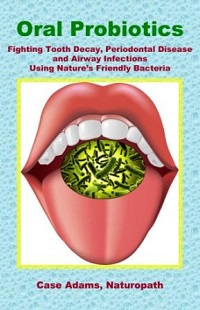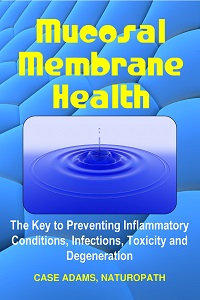Out with the Mold: Essential Steps to Safely Clear It Out of Your Home
There’s nothing charming or rustic about the musty scent of hidden mold wafting through your living room. You might not see it right away—maybe it’s just a little patch behind the bathroom sink or that odd discoloration on the basement ceiling—but mold has a way of creeping into your life before you even know it’s there.

You may be reading this with one eyebrow raised and a suspicion that your house may be hosting a mold party you didn’t RSVP to. Let’s walk through the essential steps to shut it down and keep your space safe, breathable, and clean.
Scientifically speaking, mold is a fungus containing hyphae filaments. This is typically from a species called Stachybotrys. Black mold is one of these, called Stachybotrys chartarum.
In this article
Identify the Source Before You Start Scrubbing
You can’t clean up a mess you don’t understand. Mold isn’t just a surface problem; it’s a symptom of moisture that’s gone rogue. Maybe it’s a slow leak under the kitchen sink or condensation pooling on your windows all winter long. Until you find where the dampness is creeping in, you’re just treating the symptoms, not the cause—and that mold will be back faster than a New York minute.
Surfaces infected with mold will usually have spots or areas of blackness (often termed “black mold”). If you are not sure the room or surface is moldy, you can purchase DYI home mold test kits. These allow you to be sure you’ve got something to fight off. These tests can save time and money on cleaning – by confirming whether and how bad the contamination is.
Gear Up Like You Mean It
This isn’t the time to go in with a wet sponge and a can-do attitude. Mold spores can irritate your lungs, eyes, and skin, so before you get down to business, suit up. We’re talking gloves, goggles, and an N95 mask—the same kind you might still have in a drawer from a few years back. A good mask will keep out harmful particles and protect you from splash back. Open windows, get the fans going, and make sure the room’s ventilated so you’re not breathing in the very thing you’re trying to remove.
Scrub Smart, Not Hard
Yes, bleach has a reputation, but it’s not the one-size-fits-all solution folks think it is. For nonporous surfaces like tile or glass, sure, go for a diluted bleach solution or white vinegar—it’ll get the job done. But porous surfaces like drywall or insulation? If mold’s set up camp there, those materials usually have to go. And please—don’t mix cleaning products. No one wants a side of toxic fumes with their mold clean-up.
There are some other natural cleaners for mold to consider as well. These include:
Borax: Borax is a natural cleanser known to clean polluted and infected surfaces. It has a high pH of more than 9, this will clean and deter mold growth. You can dilute a cup per gallon.
Borax and vinegar: Here is a great natural combination to clean up moldy surfaces.
Essential oils: Lemon oil, basil oil, rosemary oil, oregano oil, eucalyptus oil, thyme oil, tree tree oil – just a few drops of any of these, or a blend of two in a quart of water will eliminate mold and help prevent new mold growth.
Hydrogen peroxide: Gobbles up mold spores, dilute 1/1 in water.
Baking soda: Also high in pH, can scrub and sterilize mold, 1/1 with water.
Be careful with mixing these, but one mix to consider is baking soda and vinegar. You can mix a small amount into a container with water and add some soap – this will produce a sudsy solution, that will combat mold on floors and counter surfaces.
Toss What Can’t Be Saved
There’s a sentimental sadness to throwing away old things, but if that vintage rug smells like a bog and harbors hidden mold, it’s time to let it go. The same goes for damp cardboard boxes, soggy furniture, or old clothes that have been living in a humid basement. You’re not being wasteful—you’re protecting your home and health. Sometimes the most loving thing you can do for your space is to say goodbye to what’s been quietly poisoning it.
Don’t Forget the Hidden Zones
It’s easy to tackle what’s in plain sight, but mold has a sneaky streak. Check behind wallpaper, under floorboards, in air ducts, and inside your HVAC system. Some people find themselves in a panic after discovering mold growing in their attic insulation—right above their bedroom. Don’t be that person. Get nosy. Mold loves to hide in the forgotten corners of your home, and a good flashlight and a little curiosity can go a long way.
Invest in Moisture Control, Not Just Mold Control
Once the mold is gone, your job isn’t over. Keeping your home dry is your best defense against its return. That might mean installing a dehumidifier in your basement or fixing that leaky faucet you’ve been ignoring. Seal windows, run exhaust fans in your bathrooms, and keep an eye on your humidity levels. Your future self will thank you when you’re breathing easier in a house that smells like lemons instead of mildew.
Know When It’s Time to Call in the Pros
You can tackle a small spot of mold on your bathroom tile on your own, no doubt. But if you’re facing whole walls that look like something out of a horror movie, or if anyone in your home has health conditions like asthma or a compromised immune system, don’t hesitate—get professional help. Mold remediation specialists aren’t just glorified cleaners; they know how to contain the problem, treat it thoroughly, and prevent cross-contamination. Think of it as hiring a mold exterminator, minus the creepy bug spray.
Professional mold cleaners typically use three types of techniques to decontaminate mold. The first is by washing with antifungal chemicals. The second technique is called gamma irradiation, which will inactivate fungal spores. A third is to steam clean. Each of these will eliminate portions of the infection. Steam cleaning can eliminate fungi on surfaces, wood and carpet for example.
Let’s face it—your home is where you spend most of your time, and if it’s harboring mold, it’s affecting you more than you realize. Whether you’re dealing with a tiny patch or a full-on mold mutiny, tackling it head-on is about more than just aesthetics. It’s about reclaiming your space, protecting your health, and creating a home where you can breathe—literally—a little easier. Don’t wait for the mold to spread before you act. The earlier you intervene, the better your odds of keeping your home healthy, dry, and truly yours.
Scientific References:
Wilson SC, Brasel TL, Carriker CG, Fortenberry GD, Fogle MR, Martin JM, Wu C, Andriychuk LA, Karunasena E, Straus DC. An investigation into techniques for cleaning mold-contaminated home contents. J Occup Environ Hyg. 2004 Jul;1(7):442-7. doi: 10.1080/15459620490462823.
Sakkas H, Papadopoulou C. Antimicrobial Activity of Basil, Oregano, and Thyme Essential Oils. J Microbiol Biotechnol. 2017 Mar 28;27(3):429-438. doi: 10.4014/jmb.1608.08024.
Shala A, Singh S, Hameed S, Khurana SMP. Essential Oils as Alternative Promising Anti-Candidal Agents: Progress and Prospects. Curr Pharm Des. 2022;28(1):58-70. doi: 10.2174/1381612827666210914124344.
D’agostino M, Tesse N, Frippiat JP, Machouart M, Debourgogne A. Essential Oils and Their Natural Active Compounds Presenting Antifungal Properties. Molecules. 2019 Oct 15;24(20):3713. doi: 10.3390/molecules24203713.
Damon SA, Chew GL. Mold clean-up practices vary by sociodemographic and allergy factors. J Environ Health. 2020 Dec;83(5):18-21.

















